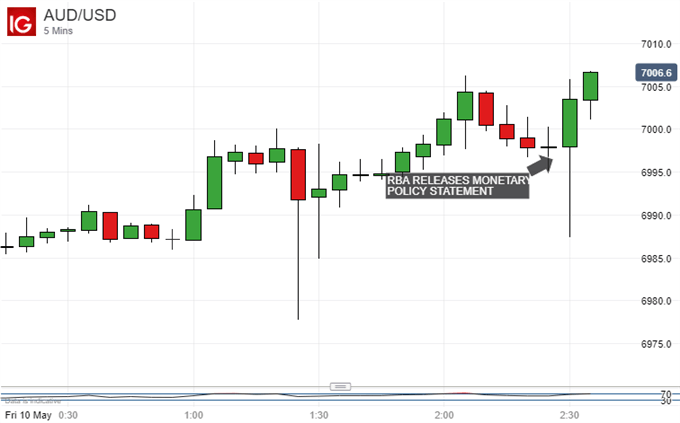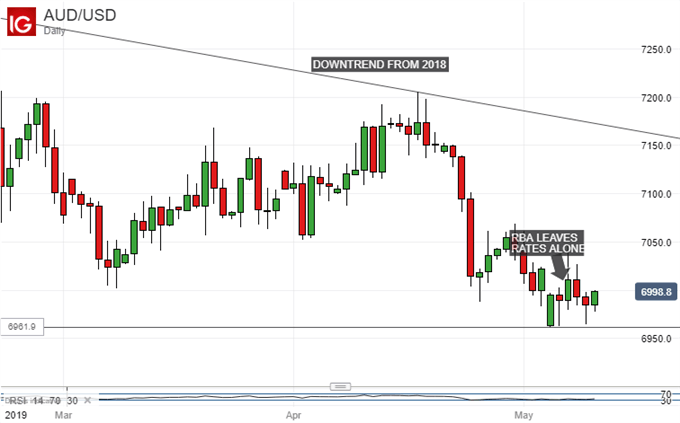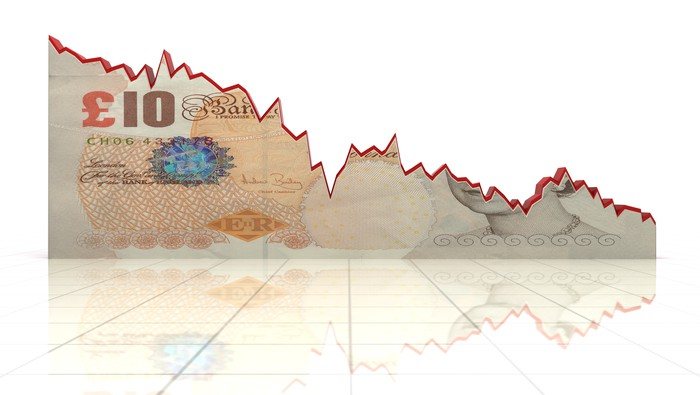Australian Dollar, RBA Statement on Monetary Policy, Talking Points:
- Growth, inflation and consumption calls were downgraded
- However, the statement was not overtly dovish on near-term interest rate prospects
- Rate futures suggest that the market still is
Join our analysts for live, interactive coverage of all major economic data at the DailyFX Webinars. We’d love to have you along.
The Australian Dollar market didn’t move much on Friday following a monetary policy statement from the Reserve Bank of Australia which saw growth and inflation forecasts trimmed again.
The central bank cut its Gross Domestic Product growth forecast for the year through June 2019 to 1.75%, from 2.50%. The expected core Consumer Price Index rate was cut to 2%, from 2.25%, with household consumption for this year’s second quarter now seen to rise 1.6% rather than 2.2%.
The RBA also said that domestic price pressures were more subdued than it had previously thought, and that trade tensions are still offering downside risks to the global economy. It said that the Australian Dollar was close to the bottom of its trading range, with local bond yields offsetting upward pressure on the currency from higher commodity prices.
All up this was undoubtedly a very restrained statement, but it was perhaps at the margins not quite as dovish as it might have been for this market, which has quite elevated expectations of lower interest rates ahead.
In any case, AUD/USD rose a little after the statement crossed the wires.

This market like all others is probably more focused on trade talks scheduled to resume later Friday between China and the US, with domestic news likely taking a backseat to headlines from Washington.
This week the RBA surprised markets by opting to leave the key Official Cash Rate at the record low of 1.50% which has endured since August 2016. Before the fact markets were pricing in a fairly high chance of a cut, based on weakness in official inflation data.
More broadly the Australian Dollar remains well within the downtrend which dominated trade since early 2018.

Local interest-rate futures markets still price in at least one and more probably two quarter-point reductions in the OCR over the next eighteen months. This abject lack of perceived monetary policy support is likely to return to weigh on the currency at any time, which makes it hard to get very bullish about its prospects.
The RBA has this week more explicitly linked the still-perky Australian labor market to its thinking. Next week’s official employment numbers may therefore see the Aussie gain sharply if they come in strongly. However, the effect to which they alter that futures-market pricing, if at all, will probably be the most interesting aspect of the data.
Resources for Traders
Whether you’re new to trading or an old hand DailyFX has plenty of resources to help you. There’s our trading sentiment indicator which shows you live how IG clients are positioned right now. We also hold educational and analytical webinars and offer trading guides, with one specifically aimed at those new to foreign exchange markets. There’s also a Bitcoin guide. Be sure to make the most of them all. They were written by our seasoned trading experts and they’re all free.
--- Written by David Cottle, DailyFX Research
Follow David on Twitter @DavidCottleFX or use the Comments section below to get in touch!







